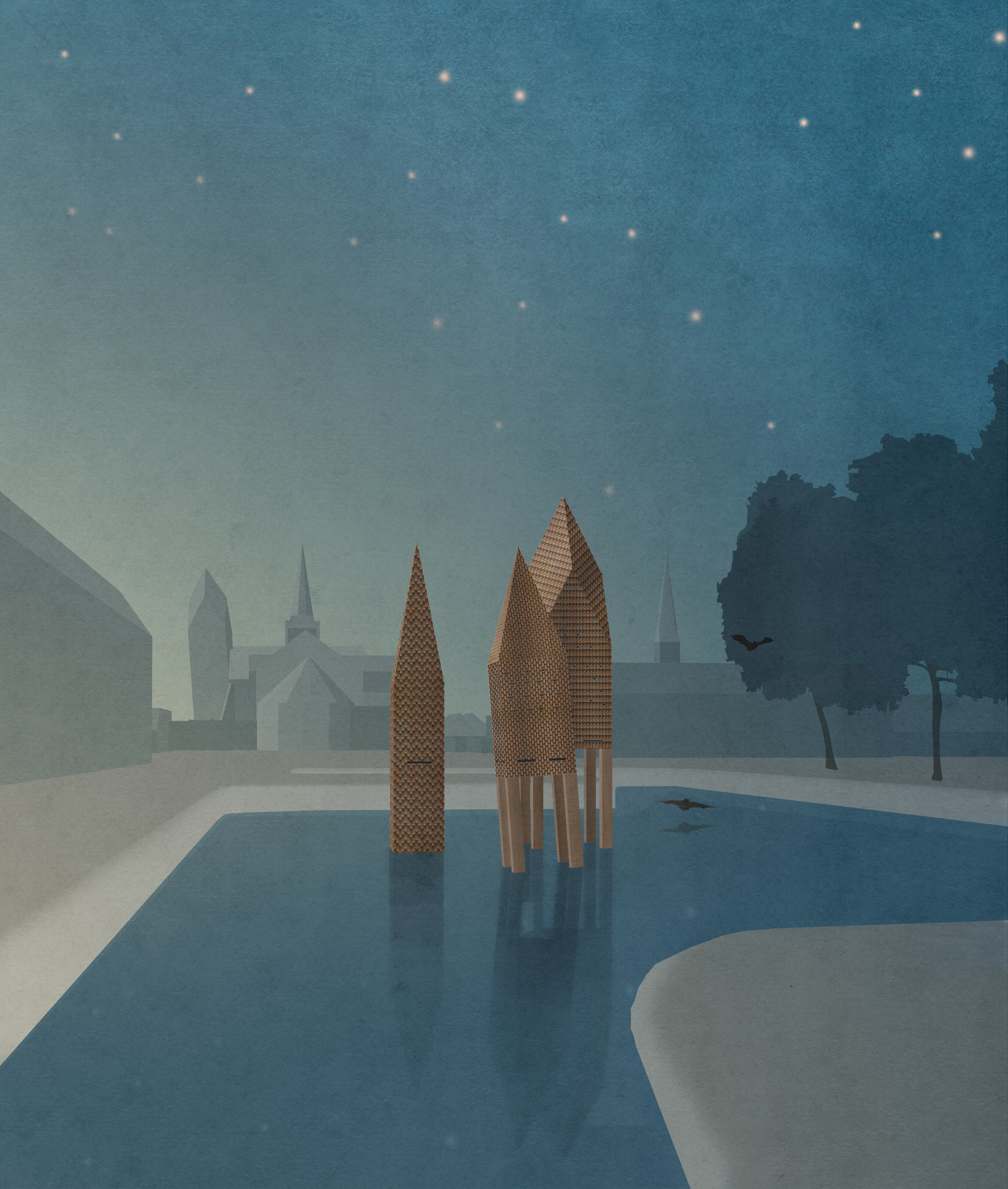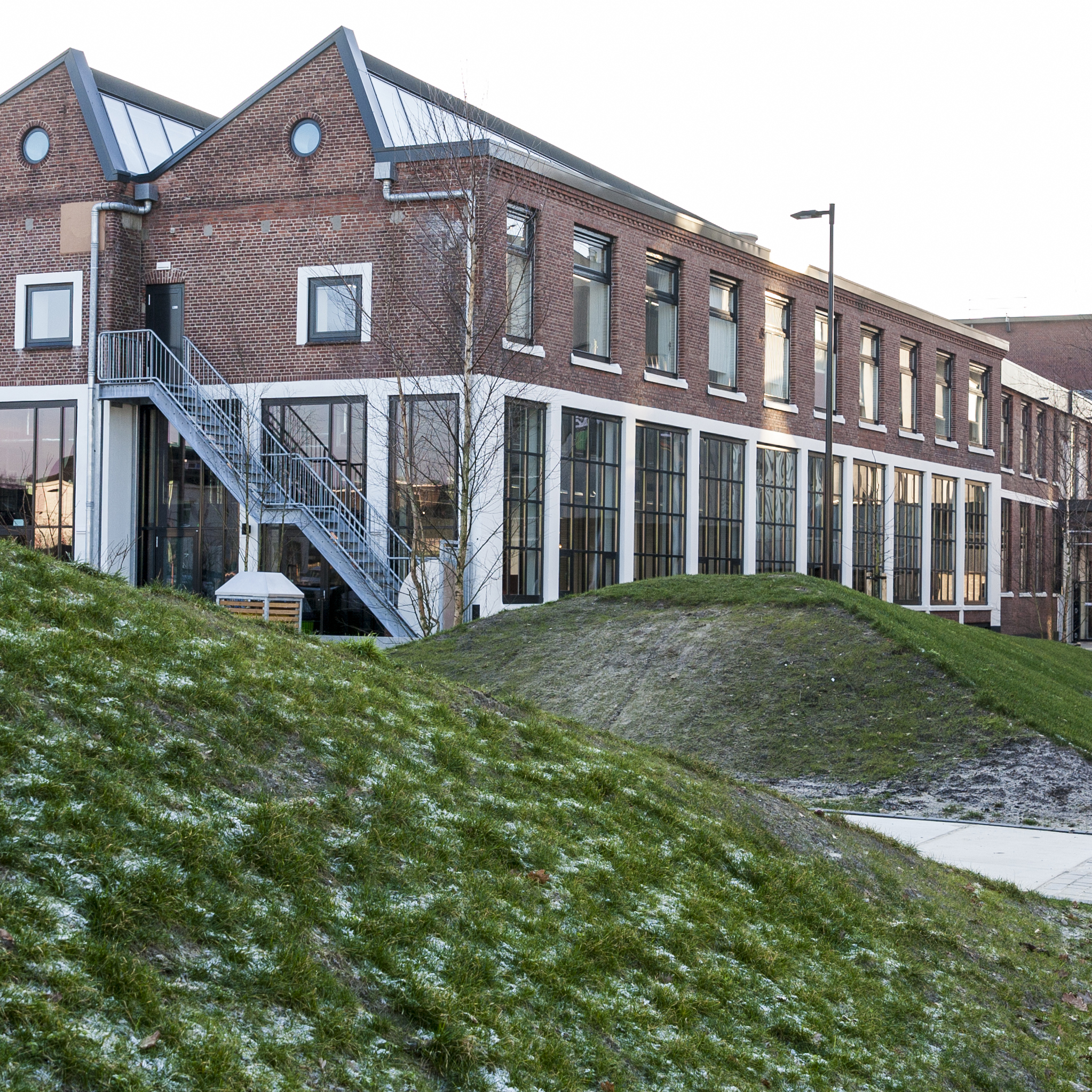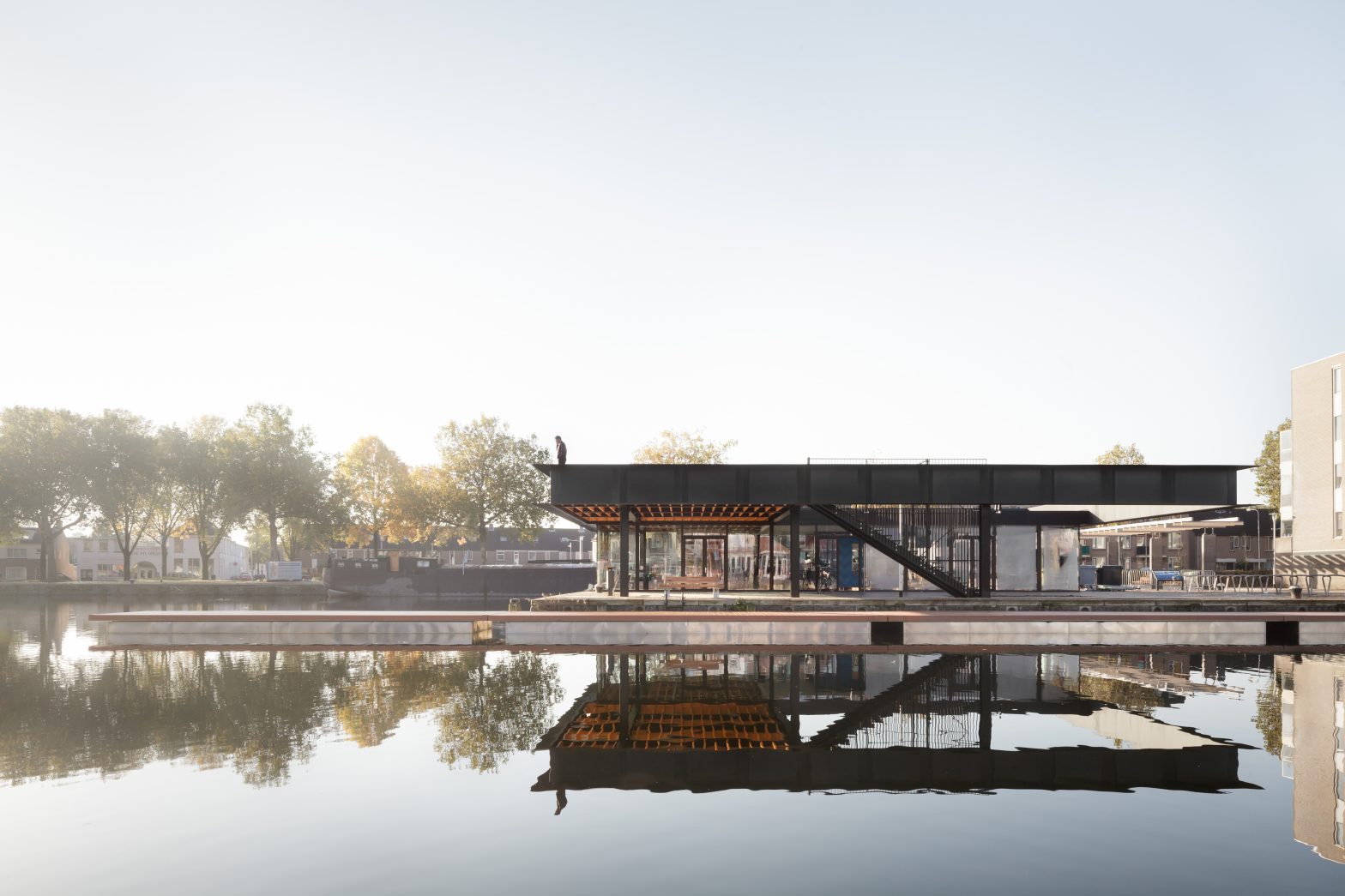Bat House Teesinkbos
Due to the construction of the N18, the Twenteroute, the bats’ current habitat has been demolished. A few hundred meters away, the Teesinkbos with its combination of open and closed forest, open water and Teesinkbeek provides a food-rich environment. From their new residence, the bats can hunt for insects along the forest edge and above the lake.
A new building has appeared at the estate of the former Huize het Teesink. A folly, an inaccessible building without windows and without doors. Seemingly without function. But this tower is definitely in use. It is the new residence of several bat species: it serves as a summer and a winter residence for the serotine bat and the rare brown long-eared bat and as a maternity and winter residence for the common pipistrelle bat. The tower will be the most important new home for bats in Overijssel.
At seven meters it is the tallest bat house in the Netherlands and every detail is tailored to its new residents. The lower half consists of gypsum walls with openings of 2 to 3 cm where the bats can crawl to hibernate. A drain in the ground makes sure that the tower has a constant humidity. The rough brick facade gives grip to bats during their approach. Open butt joints lead to a narrow cavity. All of this has the exact size for bats to keep warm, but so narrow that it cannot be entered by pine martens.
The top half is a wooden roof structure, like an old-fashioned attic. During summer the brown long-eared bat – with a wingspan of 38cm the biggest bat of the Netherlands – hangs from the rafters. The traditional pantiles provide extra hiding places. The high point and the slope of the roof are situated along the bats’ flight paths. Additionally, the facade offers hideouts between the overlapping oak panels.
Landschap Overijssel has beautifully restored the area to its former state. The paths slowly guide you around the tower. The light brick contrasts with the vegetation, the wood sheeting will gray over time and increasingly blend into the area. Reflected in the water, the appearance is different every time. A sign will explain the structure and its special inhabitants. But that’s as close as you can get: this is home to the bat.





How does it work?



Monitoring
Within half a year, the first bats have already been spotted at the tower. Ecologists from all over the country follow their activity. Building a good bat tower is remarkably challenging: Most provisions remain unused by bats.
Vroege Vogels
The tv program Vroege Vogels visited the tower and made the following contribution
Stadsnatuur Maken
“Making Urban Nature” is a book full of inspiration and examples of nature inclusive design. It calls for the integration of the living conditions found in nature in the designs of buildings and urban outdoor spaces and includes practical examples and design suggestions.


 Night lab
Night lab
 Fauna towers
Fauna towers
 Polaroid Performance Factory
Polaroid Performance Factory
 Willem II Passage
Willem II Passage
 Piushaven Pavilion
Piushaven Pavilion